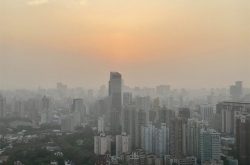
Atmospheric scientists have analyzed how the February near-total shutdown of mobility affected the air over China. Results show a striking drop in nitrogen oxides, a gas that comes mainly from tailpipes and is one component of smog.
Learning how behavior shifts due to the COVID-19 pandemic affect air quality is of immediate importance, since the virus attacks human lungs. The event is also a way for Earth scientists to study how the atmosphere responds to sudden changes in emissions.
“During the February 2020 shutdowns in China there was a large and rapid decline in nitrogen dioxide — an air pollutant largely associated with transportation — that is unprecedented in the satellite record,” said Michael Diamond, a University of Washington doctoral student in atmospheric sciences.
“On the other hand, our analysis shows no dramatic changes in the total amount of aerosol particles in the atmosphere, or in cloud properties. This suggests the immediate climate-related impacts from the shutdown are negligible,” Diamond said.
He is lead author of the study published Aug. 19 in Geophysical Research Letters.
While other studies have already looked at air quality during the pandemic, this is the first to take a more rigorous view, using all 15 years of satellite data. It uses a statistical method that compares what was seen in February 2020 to what would have been expected without the pandemic.
Read more at UW News »
